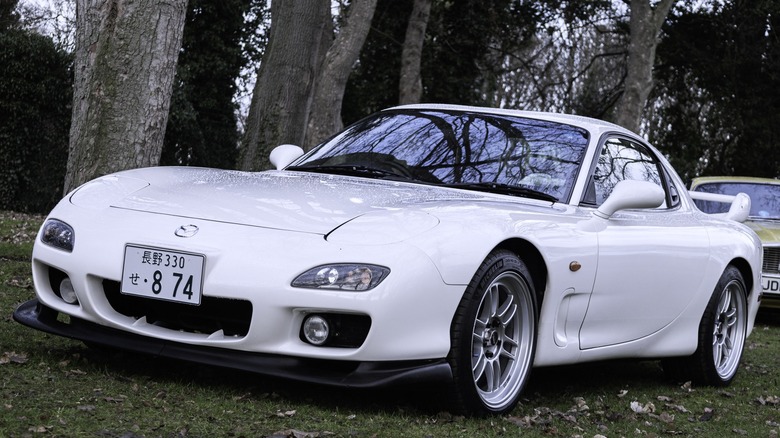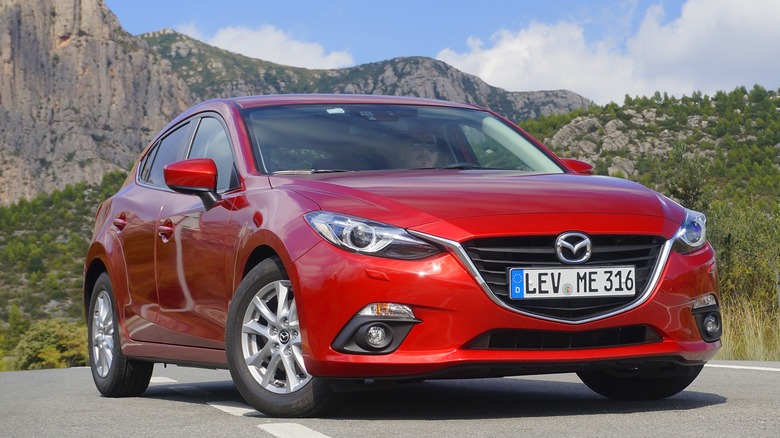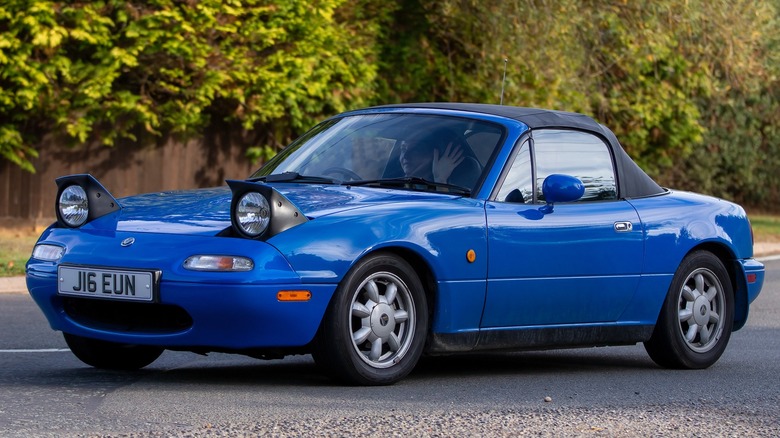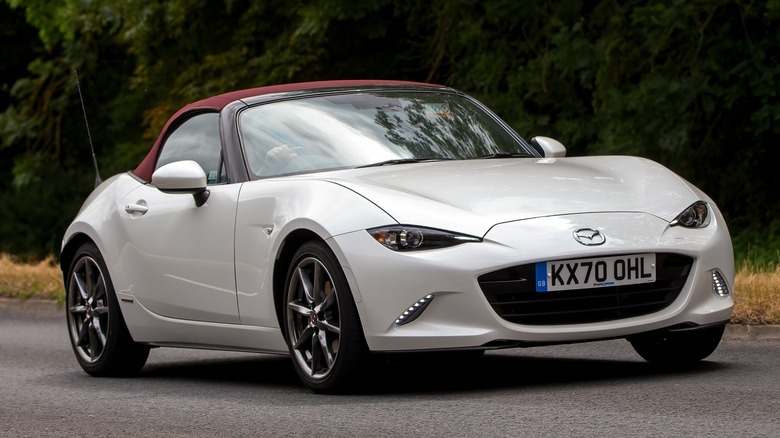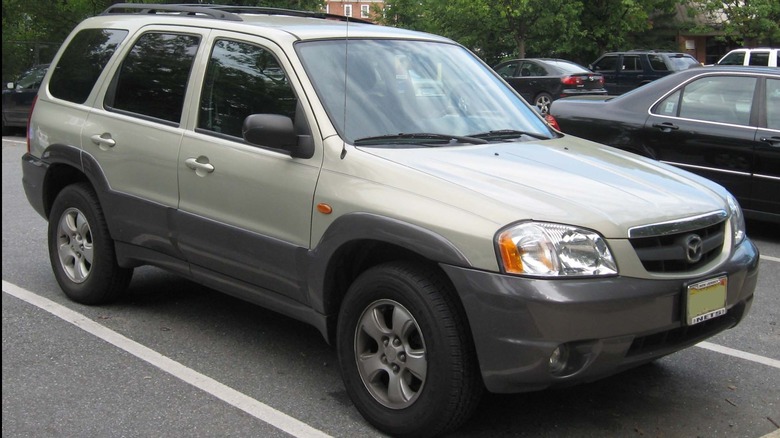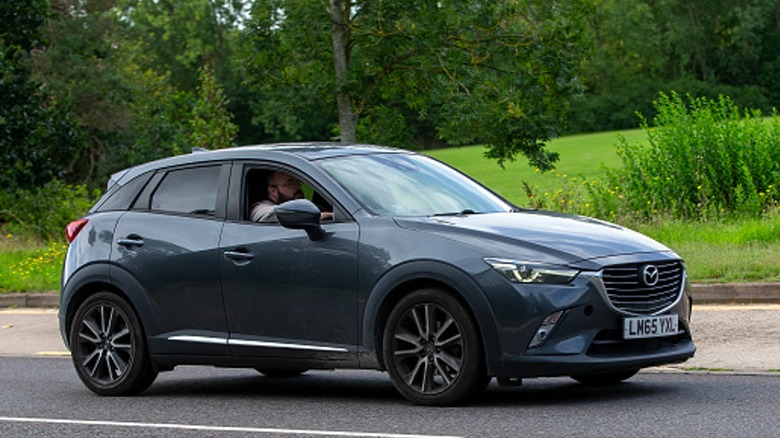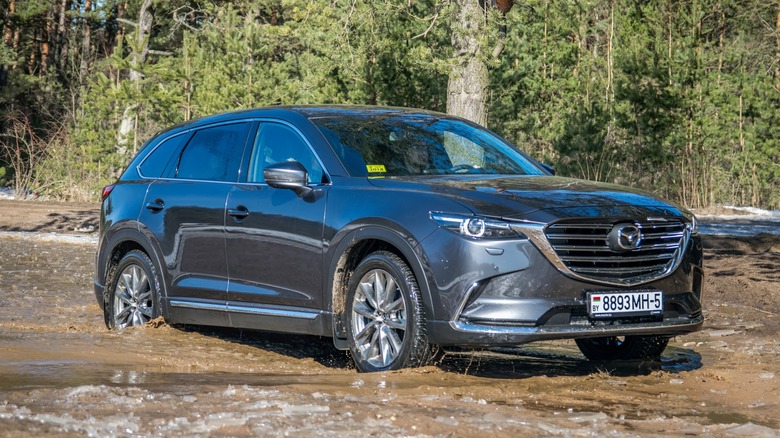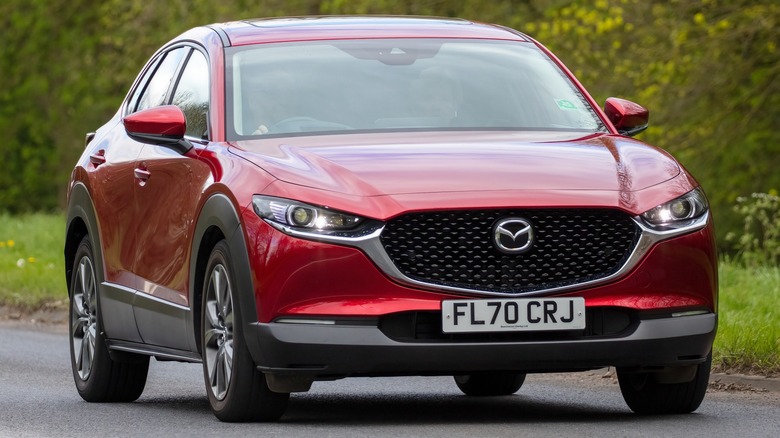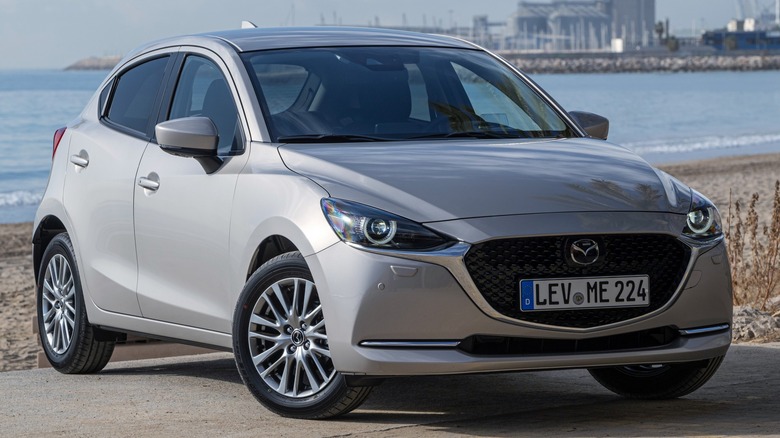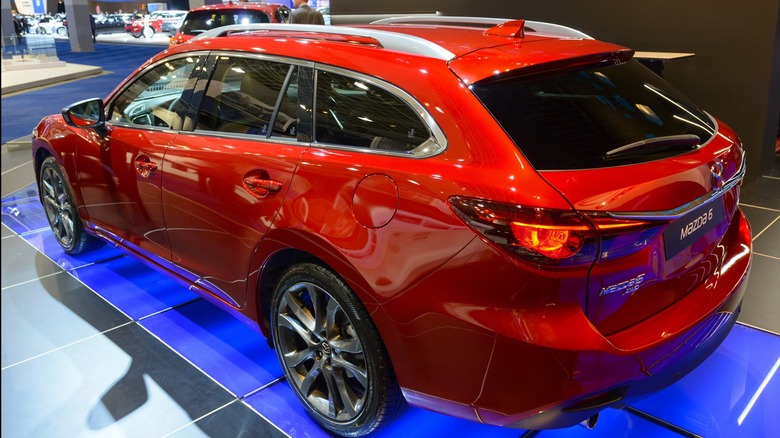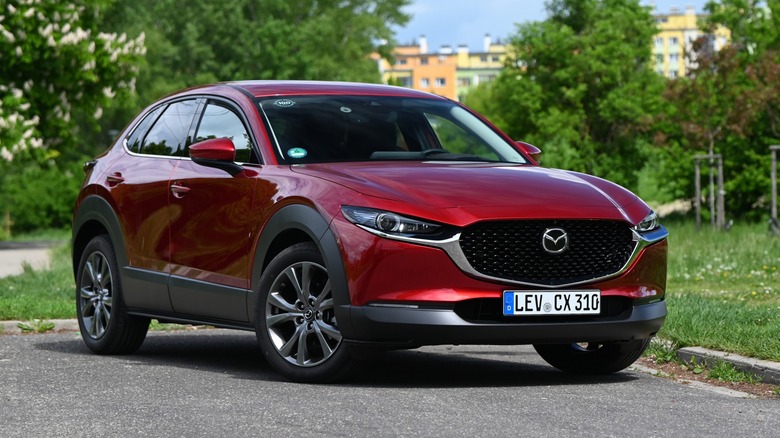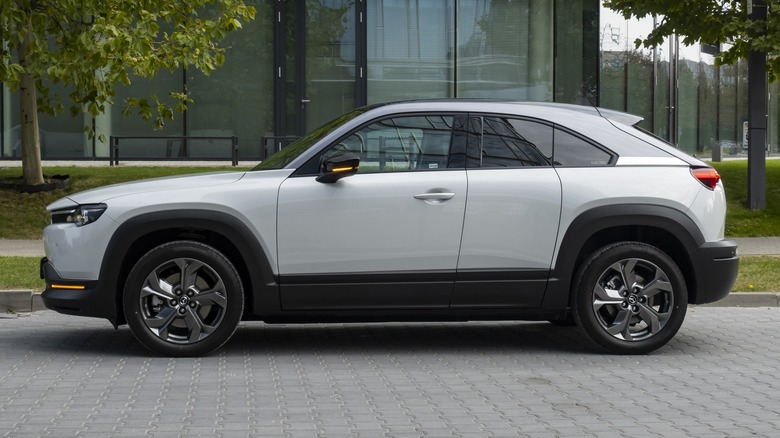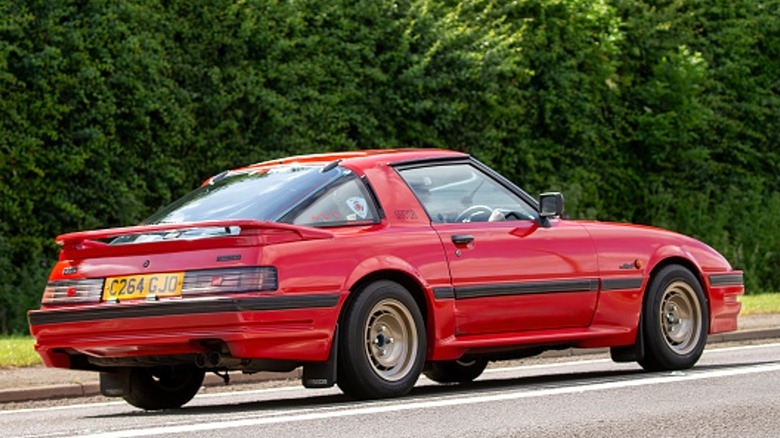The 12 Most Reliable Mazda Models Ever Made
Although Mazda is one of the smaller international car companies with a 2022 annual revenue of $27.52 billion (compared to Toyota at $258.4 billion and General Motors at $144 billion), the automaker has consistently produced high-quality, dependable vehicles. Across the board, Mazda cars score well for reliability. In 2020, the company surged ahead to the top spot in the Consumer Reports Auto Reliability rankings, beating the perennial leader Toyota. The Mazda MX-5 is the most reliable with a score of 98 out of 100, while the CX-30, CX-3, and CX-5, all performed well, scoring 85 or better.
While Mazda is one of the world's most innovative car companies with a solid record for reliability, some of its issues have affected several models. Malfunctioning brakes is a problem. Reports compiled by ReliabilityIndex.com show that over 14% of the owners had issues with their brakes. Other common problems include defective clutch systems with faulty release levers, pins, and bearings causing premature clutch wear and eventual failure. The defective Takata airbags resulting in the largest U.S. automotive recall of all time affected several Mazda models (as well as many other Japanese cars). Mazdas equipped with L-series engines experienced defective variable valve timing (VVT) which could lead to an engine failure.
Despite these issues, Mazda cars require fewer repairs than most of the competition and when required, the costs tend to be lower than other manufacturers. Here are the 12 most reliable Mazda models ever made based on ratings from Consumer Reports, CoPilot, RepairPal, and others.
Mazda3
Mazda3 production spanned four generations beginning with its release in 2004. The first generation struggled with quality control issues which negatively impacted reliability. Little changed in the second generation, but with the introduction of the third generation in 2014 Mazda made some major improvements that included new engines, tech, and an upgraded interior. Mazda replaced the first-generation Focus platform used in early models with its own lightweight Skyactiv architecture. The new structure reduced the weight by 60 to 100 pounds, depending on trim level, and boosted torsional rigidity by 30 percent. A new body improved aerodynamics and two engine options offered excellent fuel efficiency. The changes improved reliability.
The DOHC 16-valve 2.0-liter inline-four produces 155 horsepower and 150 pound-foot of torque, while the 2.5-liter version generates 184 horsepower and 185 pound-foot of torque. Car and Driver tests show the Mazda3 equipped with a 2.0-liter engine and six-speed automatic accelerating to 60 mph in 8.2 seconds and the 2.5-liter model reaching the 60-mph mark in 6.8 seconds. Both cars achieve a top speed of 130 mph, and the EPA estimated fuel efficiency is 30 miles per gallon city and 41 highway with the smaller engine.
The automotive website, iSeeCars, analyzed over 12 million cars to determine the reliability of all Mazda models and how they rank relative to the competition. The results show the Mazda3 is the highest-rated Mazda model for reliability in its class, ranking three out of 43 Most Reliable Small Cars, closely followed by the Mazda Mazda3 Hatchback and the Mazda CX-9.
Mazda MX-5 Miata NA (first generation 1989-1997)
The first-generation Mazda MS-5 Miata NA built from 1989-1997, is an affordable, lightweight two-passenger car in convertible or coupe trim. Although it lacks the exceptional power and acceleration of more expensive high-performance cars, the front mid-engine configuration with rear-wheel-drive gives the sports car responsive, agile handling, and makes it a lot of fun to drive.
The 1.6-liter DOHC 16-valve inline-4 with iron block and aluminum head mated to a five-speed manual transmission generates 116 horsepower at 6,500 rpm and 100 pound-foot of torque at 5,500 rpm. Despite minimal power, the engine pushes the Miata with a curb weight of 2,210 pounds from 0 to 60 mph in a respectable 9.2 seconds. The sports car reaches the quarter mile in 16.8 seconds at 83 mph and achieves a top speed of 116 mph.
RepairPal places the Miata MX-5 in 8th place out of 21 subcompact vehicles with an above-average reliability rating of 4.0 out of 5. Annual repair costs are estimated at only $429, making the Miata less expensive to own and maintain than most subcompact cars and all vehicles at an average of $456 and $652 respectively. MX-5 owners are required to service their cars for unscheduled repairs about 0.3 times a year, compared to 0.4 times for all vehicle models. When Miata repairs are needed, only 10% of the repairs are considered severe. The figure compares well with the 11% average for subcompacts and 12% for all model vehicles, and repair parts and labor costs are often lower than those of other brands.
Mazda MX-5 Miata ND (fourth generation 2015-present)
In 2016, Mazda offered the fourth-generation Miata ND in the traditional drop-top convertible form, but also in a retractable fastback hardtop or Miata RF model. After three generations of tweaking the MX-5 Miata powered by a 2.0-liter inline-four producing 155 horsepower, Mazda upgraded the power with the 2.0-liter inline-four Skyactiv engine producing 181 horsepower at 7,000 rpm and 151 pound-foot of torque at 4,000 rpm. Buyers had the option of a six-speed manual or six-speed automatic transmission.
Car and Driver test results showed the 2019 Miata ND acceleration from 0 to 60 mph in 5.7 seconds, a significant improvement over the first-generation Miata at 9.2 seconds. The new Miata reached the quarter mile in 14.5 seconds at 95 mph and a top speed of 140 mph. Mazda left the 2019 Miata ND suspension untouched except for some minor tuning in 2017 for the retractable hardtop RF model. The ND demonstrated the same excellent road handling characteristics of the earlier Miatas as indicated by the roadholding, 300-foot diameter skidpad test results of 0.90g.
The fourth-generation Miata continues its reputation not only as an affordable fun-to-drive vehicle but also as one of the most reliable sports cars on the market. ReDriven described the Miata MD positively, reporting a good reliability rating and no "big issues" with the engine. Per RepairPal, the 2017 Miata has a repair record similar to earlier generations and less than most of the competition with an annual estimated maintenance cost of $434.
Mazda Tribute
Mazda produced the Tribute, a reliable compact SUV with ample interior space and comfort, from 2008 to 2011. The SUV seats five passengers, and boasts a cargo space of 66.8 – 66.9 cubic feet. The base model 2WD was equipped with a four-cylinder, 2.5-liter engine producing 171 horsepower at 6,000 rpm and 171 pound-foot of torque at 4,500 rpm. At the high end in 2008, the Tribute I 3.0 V6 4WD engine generated 194 horsepower at 6000 rpm and 195 pound-foot at 4,750 rpm. The 3.0-liter version accelerates from 0 to 62 mph in 11.8 seconds, and achieves a maximum speed of 118 mph.
Handling performance comes from an independent front suspension with McPherson struts, coil springs, and an anti-roll bar, while the rear suspension employs a multilink configuration with coil springs and an anti-roll bar. Braking power is supplied by vented discs in the front and drum brakes in the rear. Mazda released the second-generation Tribute in 2008 with a modified exterior, an improved interior, and new powertrain options including a base trim equipped with a 3.0-liter V6 engine producing 240 horsepower.
In a Kelly Blue book survey, owners consider the 2005 MAZDA Tribute above average rating the quality a 4.4 and the reliability a 4.5 out of 5. One owner wrote, "It cost me so little in repairs and maintenance over the years, I'd buy a new one again." According to RepairPal.com, typical annual repairs average $523, giving it a reliability rating of 4.0 out of 5 stars and placing it in the 10th position out of 26 vehicles ranked in its class.
[Featured image by IFCAR via Wikimedia Commons | Cropped and scaled | Public Domain]
Mazda CX-3
Mazda is unique among current-day automakers in that until 2021 it offered two vehicles in the extra-small subcompact crossover SUV class: the CX-3 and the CX-30. Both cars offered sleek styling, a quasi-luxurious interior, and exciting driving dynamics.
The 2016 Mazda CX-3 AWD is a front-engine, five-passenger, four-door hatchback powered by a DOHC 16-valve Atkinson-capable 2.0-liter inline-four, featuring an aluminum block and head, and direct fuel injection. The engine produces 146 horsepower at 6000 rpm and 146 pound-foot of torque at 2800 rpm and mates to a six-speed manual or six-speed automatic with manual shifting mode. Car and Driver test results show the CX-3 accelerates from 0 to 60 mph in 8.1 seconds, 0 to 100 mph in 23.8 seconds, reaches the quarter mile in 16.3 seconds, and achieves a top speed of 120 mph.
Built from 2016 through 2021, Mazda discontinued the CX-3 due to shifting consumer interests leaning toward larger SUVs. However, the CX-3 proved to be a reliable vehicle, achieving a RepairPal reliability rating of 4.5 out of 5.0, which ranks it second out of seven in the subcompact SUV category. The CX-3 has an excellent repair record with an average annual repair cost of $345. Repair frequency and severity are much lower than the competition making it more reliable than most of the vehicles on the road. The iSeeCars ratings show the CX-3 achieving 8.2 out of 10, and the car is ranked second out of 20 on the list of Best Subcompact SUVs using the criteria of reliability, retained value, and safety ratings.
Mazda CX-9
In 2019, Car and Driver named the Mazda CX-5 compact crossover SUV and the CX-9 three-row crossover SUV to its "10 Best Trucks and SUVs" list, praised for its design, exceptional driving dynamics, and refined interior. Reliability was a significant factor in the decision. RepairPal says the Mazda CX-9 has a low frequency of unscheduled repairs at an average of 0.6 times per year. Severe or costly repairs have a probability of 10%, lower than the average of 15% for full-size SUVs and 12% for all vehicle types. The Repairpal reliability rating is based on the severity of actual repairs, frequency, and cost. The Mazda CX-9 ranked in first place out of 14 full-size SUVs with a Reliability Rating of 4.0 out of 5.0 and an annual repair cost is $539.
The CX-9 is equipped with a 2.5-liter turbocharged inline-four engine that sends power through a six-speed automatic transmission to all four wheels. The engine produces 250 horsepower when it's using 93-octane gasoline and 227 horsepower when the vehicle is running on 87-octane fuel. Motor Trend tests show the 2021 CX-9 Signature AWD accelerating from 0 to 60 mph in 7.2 seconds, which competes well with the 2020 Subaru Ascent Touring and Kia Telluride SX V6 AWD.
Mazda CX-5
The Mazda first-generation CX-5 (2012 – 2017) is a charismatic crossover that combines gorgeous styling inside and out with unparalleled driving enjoyment. Precise steering, composed cornering, and the ride quality of more expensive crossovers make driving on mountain roads a pleasure. The interior design is upscale with an attractive layout using high-quality materials and comfortable seats, ideal for long road trips. While the 2012 CX-5 boasted an interior with low road noise, Mazda modified the 2017 model with more sound insulation and a thicker windshield to make it even quieter.
The early CX-5 is equipped with a 2.0-liter four-cylinder engine producing 162 horsepower or a 2.2-liter turbocharged diesel generating 147 horsepower or 173 horsepower. Either configuration was available with a six-speed automatic transmission in front-wheel or all-wheel drive. In 2017, the higher horsepower 5-door sport-utility wagon accelerated to 60 mph in 8.4 seconds and reached the quarter mile in 16.3 seconds on its way to a top speed of 127 mph.
The crossover proved to be a reliable car, and in 2012, the CX-5 won the Car of the Year Japan Award. The "Best Car Rankings" generated by iSeeCars, based on research of 12 million cars for durability, safety data from the National Highway Traffic Safety Association, and retained value, gave the CX-5 a reliability score of 7.2 out of 10. J.D. Power gave a more recent model, the 2021 Mazda CX-5, a predicted reliability score of 81 out of 100. A score of 91-100 is considered "best" while 81-90 is better than average.
Mazda2
While subcompact cars industry-wide average $456 annually for repairs and maintenance, the Mazda2 averages $449. Manufactured since 2002, the supermini car is well known for its overall durability, efficiency, and the reliability of its naturally aspirated engine. RepairPal awards the Mazda2 a Reliability Rating of 4.5 out of 5.0, placing it third out of 21 subcompact cars. The entry-level Mazda2, positioned just below the Mazda3, is also one of the most reliable Mazda models on the MenCarPics Mazda models list.
The 2023 Mazda2 remains an unpretentious car that fell a bit short of the competition in the form of the Vauxhall Corsa and the immensely popular Ford Fiesta. However, all four trim levels are loaded with features including air conditioning, navigation, cruise control, and integrated Bluetooth. The high-level trims boast heated front seats and steering wheel, a color head-up display, and a reverse-view camera, all at a reasonable price.
While the Mazda2 is not known for its exceptional power and performance, the automaker offers a reliable naturally aspirated 1.5-liter four-cylinder engine with one of three power outputs: 74 brake horsepower, 89 brake horsepower, or 113 brake horsepower. When paired with an electric motor, the latter two in hybrid form can reach a fuel efficiency of 60 miles per gallon. Without a turbocharger, the performance is lackluster. The smallest 74-brake horsepower engine pushes the Mazda2 to 62 mph in a disappointing 11.3 seconds while the 89-brake horsepower unit doesn't do much better at only 9.8 seconds and a top speed of 106 mph.
Mazda6
The 2021 Mazda6 is a front-engine, front-wheel-drive, 5-passenger, 4-door family sedan that competed well with its closest competitors, the Honda Accord and the Hyundai Sonata during its eight years of production beginning in 2003. The sedan offers an above-average driving experience with good performance and exceptional handling.
In 2021, the Mazda6 offered two engine options. The base model 2.5-liter four-cylinder generated 187 horsepower and 186 pound-foot of torque, while the turbocharged engine produced up to 250 horsepower and 320 pound-foot of torque, using high-octane gasoline. Both were mated to a smooth-shifting six-speed automatic transmission that sends power to the front wheels. Car and Driver test results show the 250-horsepower version with an acceleration from 0 to 60 mph in 6.1 seconds, a quarter mile time of 14.7 seconds at 97 mph, and a top speed of 149 mph.
Although the Mazda6 has an excellent reliability record for the entire 18 years of production, some years are more reliable than others. According to CoPilot, the best years are 2005, 2007, 2011, 2012, 2015, 2017, 2018, 2019, 2020, and 2021. J.D. Power rated the Mazda 6 with an 83 out of 100 for reliability, which means the car performed well without many expensive repairs. RepairPal gave the 2023 sedan a 4 out of 5 rating, placing it sixth out of 24 competing midsize vehicles.
Mazda CX-30
The Mazda CX-30 is a small front-engine, all-wheel-drive, five-passenger, four-door wagon (SUV) with higher trim levels equipped to compete well with the Audi Q3 and the BMW X1, but at the lower price of similarly equipped Hyundai Kona and the Volkswagen Taos models. The early base model engines offered disappointing performance, although the 2023 base 2.5-liter four-cylinder engine has more power, producing 186 horsepower and improved fuel efficiency estimated at 26 city, 33 miles per gallon highway, and 29 miles per gallon combined.
CX-30 performance is greatly enhanced with the naturally aspirated 2.5-liter DOHC 16-valve inline-4 with aluminum block and head and direct fuel injection. Mated to a 6-speed automatic, the mill produces 186 horsepower at 6,000 rpm and 186 pound-foot at 4,000 rpm. The 2.5-liter turbo-four generates 227 horsepower and 310 pound-foot of torque on regular-grade fuel but jumps up to 250 horsepower and 320 pound-foot of torque using 93-octane premium gas. The naturally aspirated version accelerates to 60 mph in 7.6 seconds, reaches the quarter mile in 15.9 seconds at 89 mph, and achieves a top speed of 126 mph.
Although the CX-30 is relatively new with limited available repair and maintenance data, Consumer Reports indicates the car has only one recall to date, and gave it a reliability rating of 4.0 out of 5.0. RepairPal, meanwhile, has no customer complaints for the 2020 CX-30, and newer models suggesting that the reliability should be in line with Mazda's overall rating for all models.
Mazda MX-30
The MX-30 was Mazda's first all-electric vehicle sold in the U.S. The automaker began production in 2020 and, after two model years decided 2023 will be the last year for the American market, although it will continue in Japan and Europe. The stylish EV that features an interior made with eco-friendly materials suffered from an undersized motor and limited range. Even an excellent safety rating and the Mazda brand's long-term reliability couldn't save the model.
Mazda positioned the MX-30 as a commuter car with a priority on design and dynamics ahead of range. The minuscule single front-mounted 32.0 kWh motor generates a mere 143 horsepower but accelerates the vehicle to 60 mph in a respectable 8.7 seconds. However, the range is an EPA-estimated 100 miles, which compares poorly to the small Chevy Bolt EV with an estimated 259 miles of range on a full charge.
The MX-30 is fitted with responsive steering and a suspension providing lively performance making it a fun car to drive. A range of passive and active safety systems including Emergency Lane-Keeping Assist, Lane Departure Warning, Driver Attention Alert, and Blind Spot Monitoring, contributed to the car's top five-star score from Euro NCAP. Although the MX-30 has only a few years of customer feedback, the Mazda brand always performs well in the Auto Express Driver Power survey for reliability. The automaker placed seventh out of 32 manufacturers, well ahead of notable rivals such as Hyundai, Honda, and Nissan.
Mazda RX-7
The Mazda RX-7, a sleek, low-slung coupe with a wedge-shaped nose and rear hatch with a wraparound window, powered by a rotary engine, was one of the most innovative sports cars in history. The lightweight (just over 2,000 pounds) and the front mid-engine layout that sent power to the rear wheels offered a near-perfect weight distribution for exceptional road handling. The 2.3-liter (rotary equivalent) naturally aspirated two rotary chamber Wankel rotary engine produced 105 brake horsepower at 6,000 rpm, and 106 pound-foot of torque at 4,000 rpm. The first-generation RX-7 accelerated to 60 mph in 9.5 seconds, and reached a top speed of 115 mph.
The rotary-powered sportscar also propelled Mazda to unprecedented success on the racetrack. In Europe, the RX-7 won the 1980 and 1981 British Saloon Car Championships and proved the rotary engine's reliability by winning the overall victory at the 1981 24 Hours of Spa. The brand was successful in the U.S. as well with over 100 IMSA race victories. The RX-7 was Mazda's first mass-market sports car. The automaker sold 811,634 units during its production run from 1978 and 2002, becoming the best-selling rotary-powered vehicle in history.
Although the rotary engine proved finicky, a proper service schedule rewarded owners with a reliable, high-performance machine. A Kelly Blue Book survey showed Owners rating the 1995 Mazda RX-7 with 4.8 out of 5 overall, 4.9 for quality, and an above-average 4.6 for reliability.
